Peru: Arequipa
La daabacay: 25.09.2018
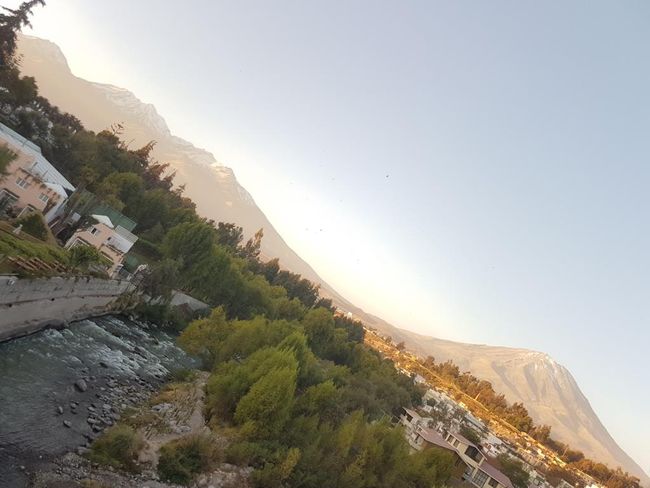
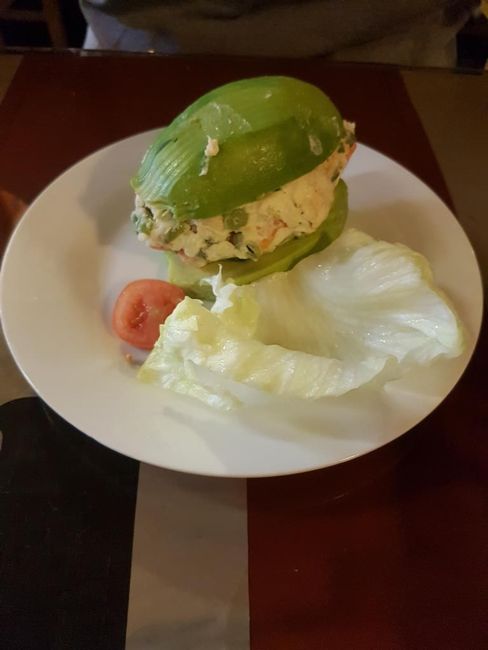
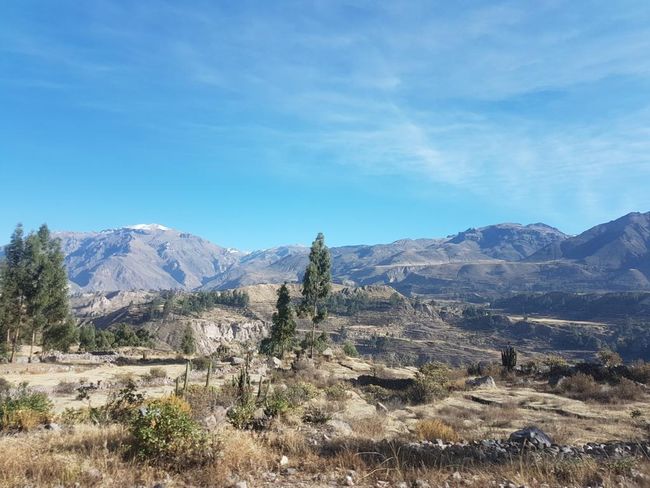
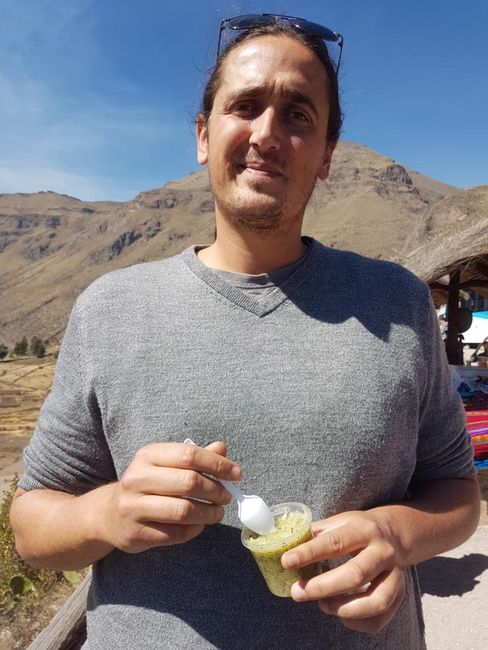
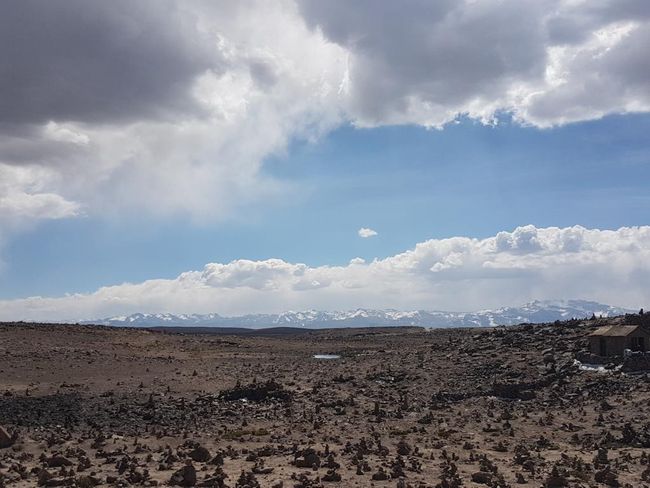
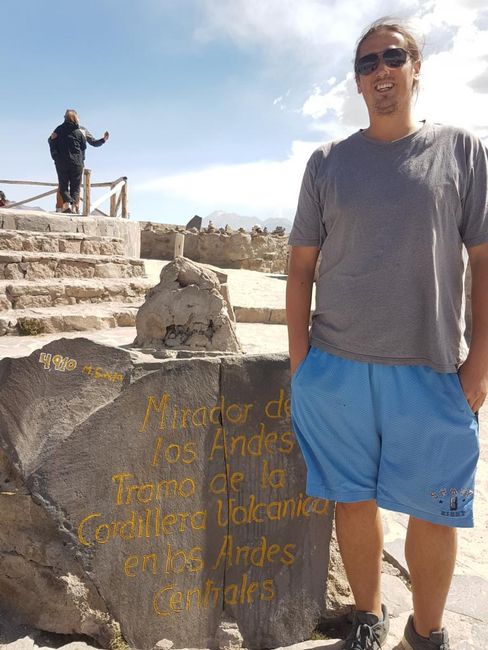
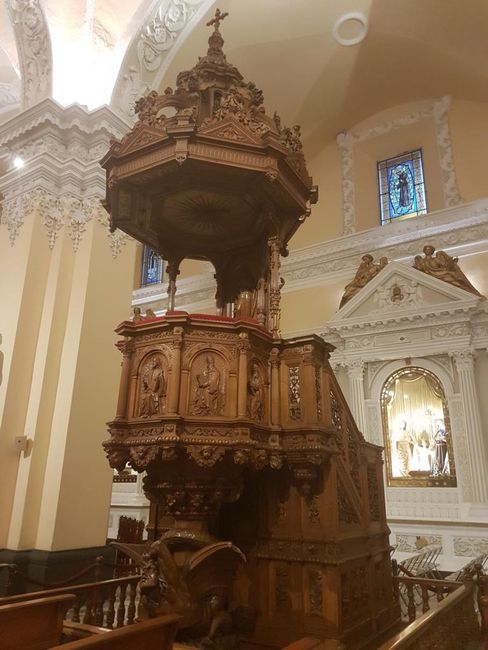
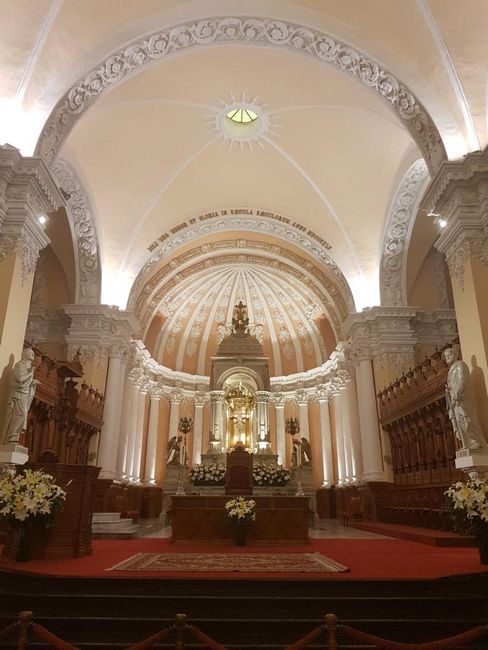
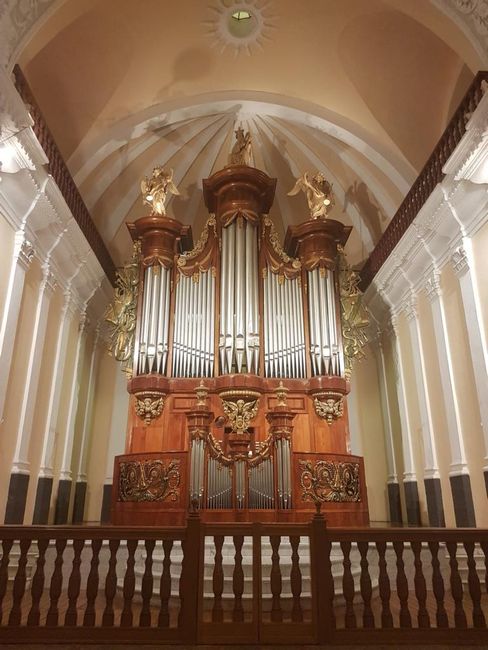
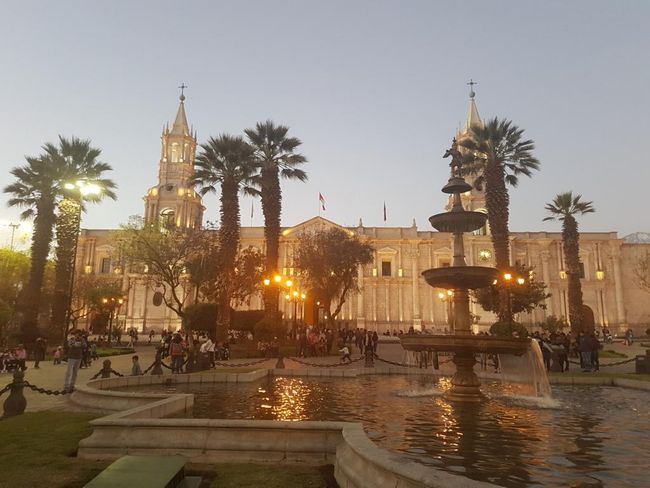
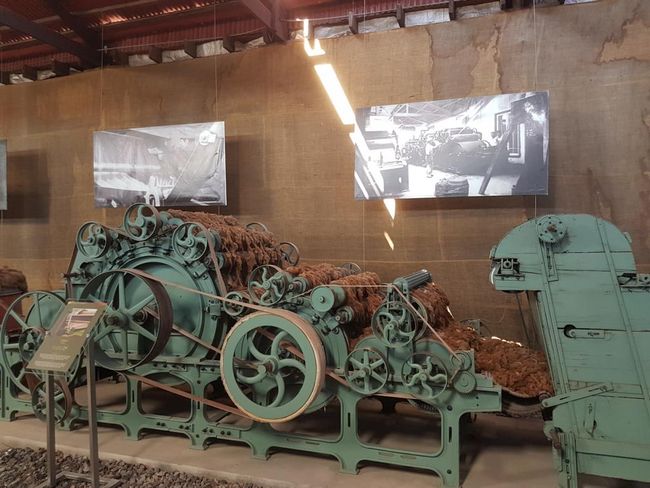
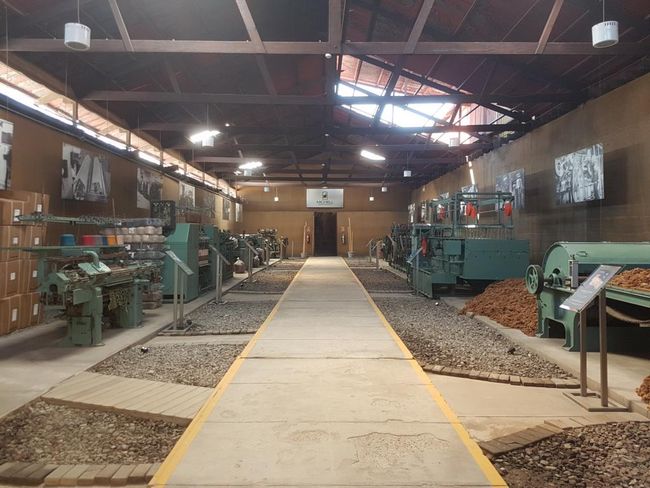
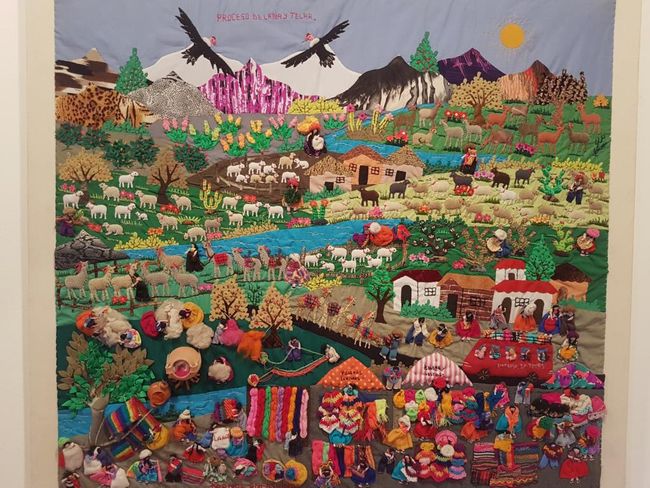
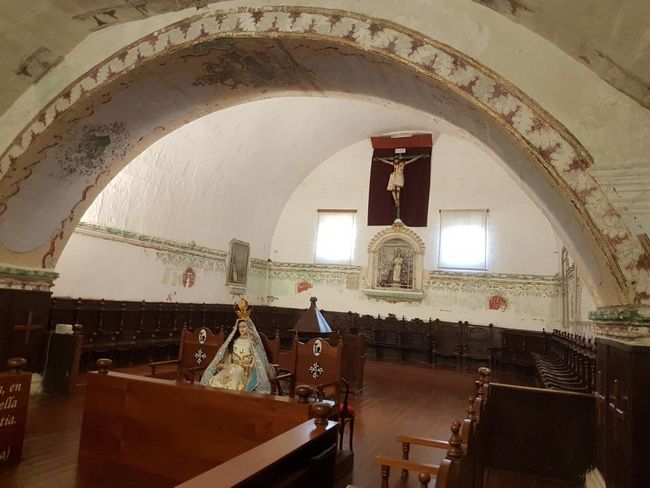
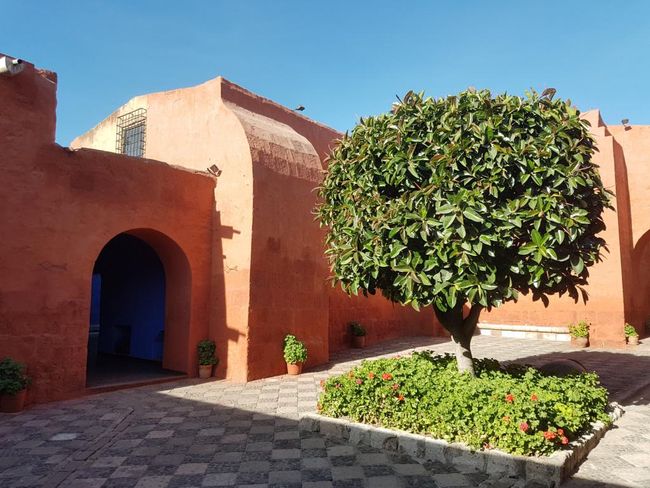
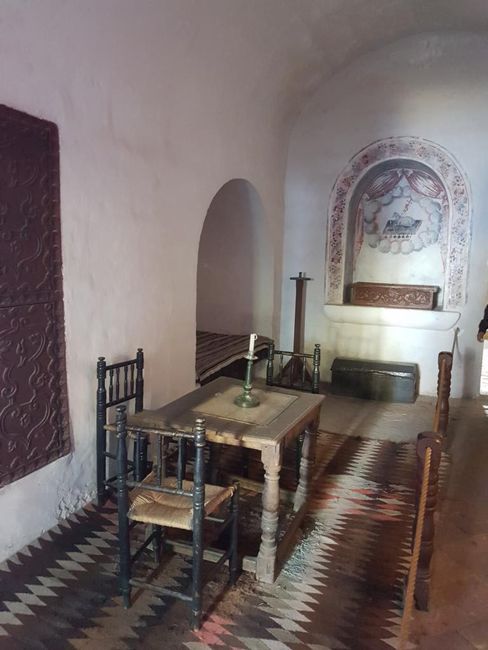
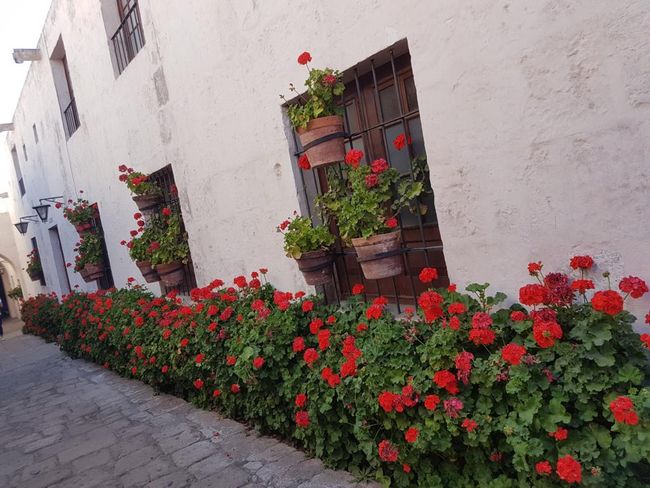
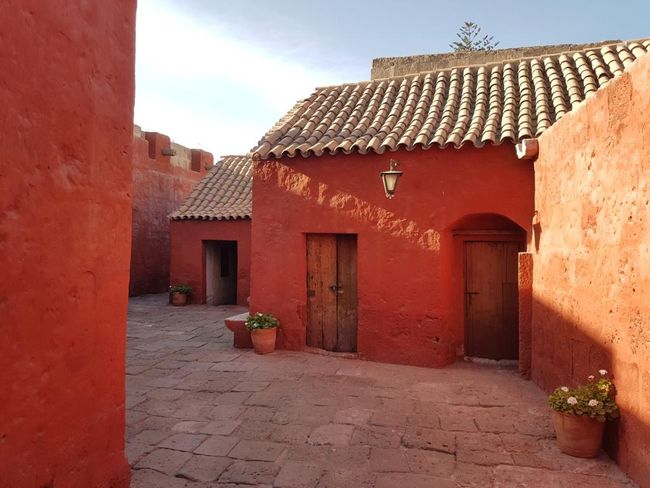
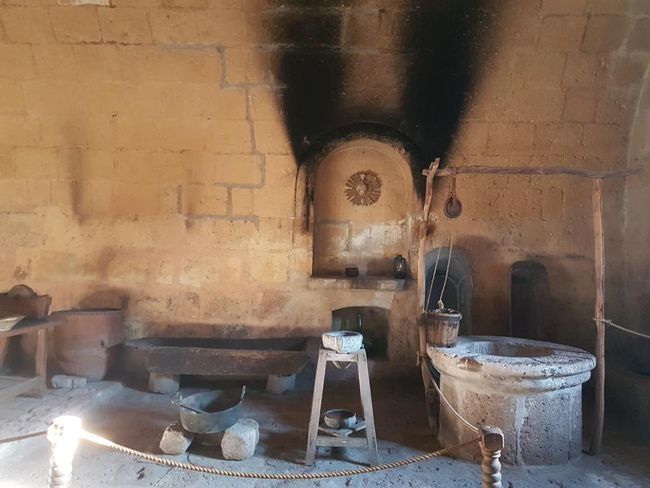
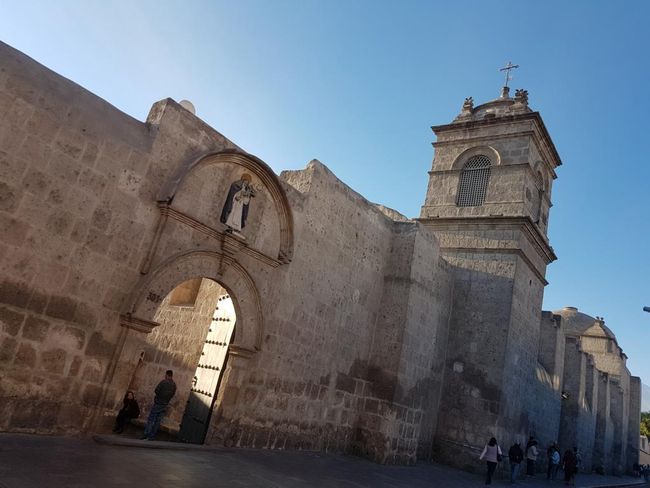
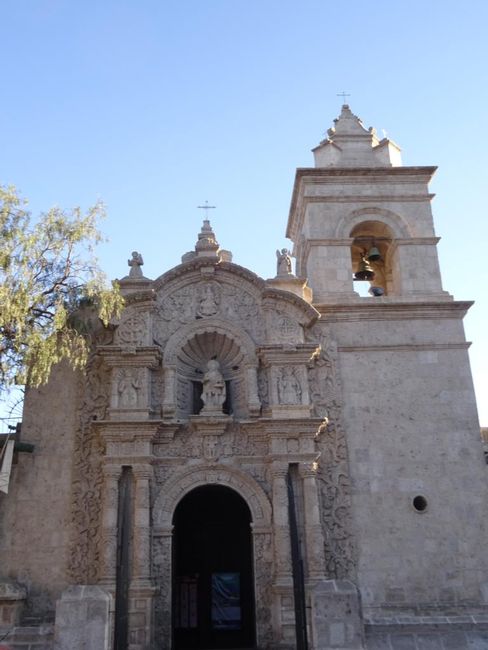
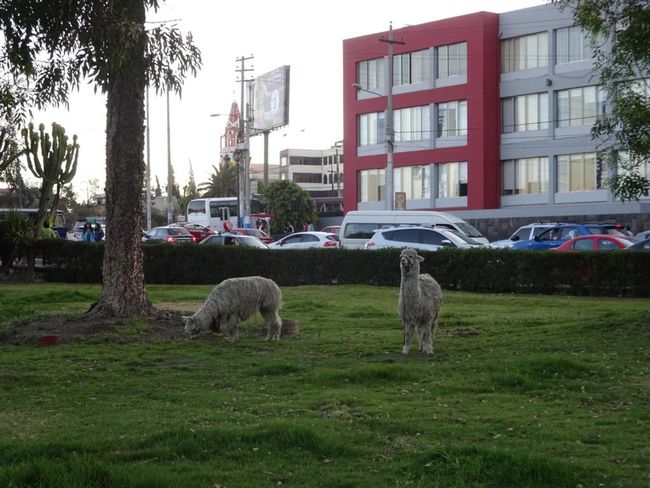
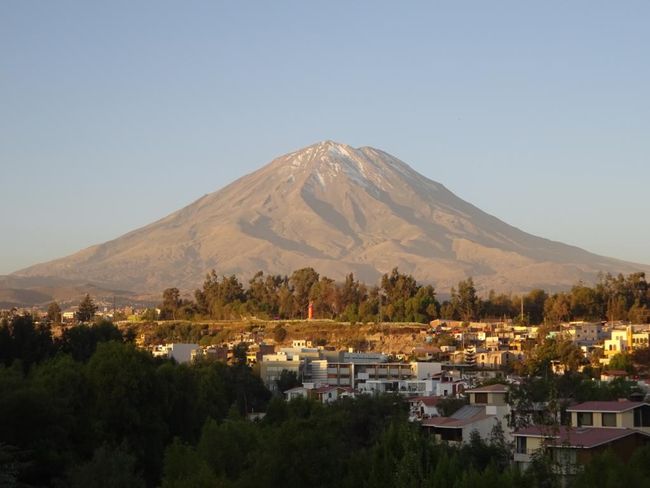
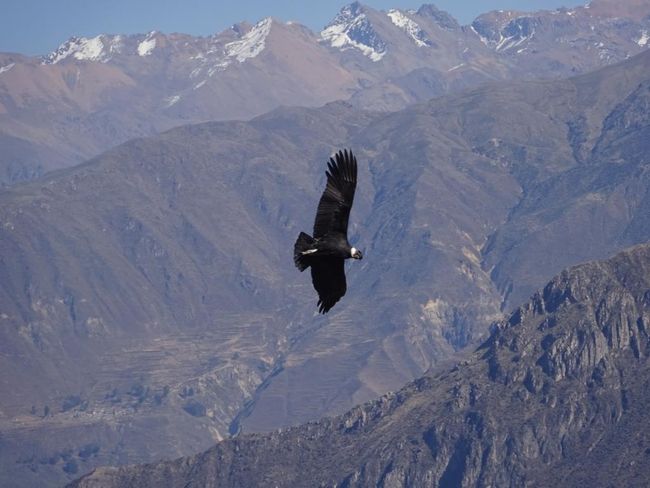
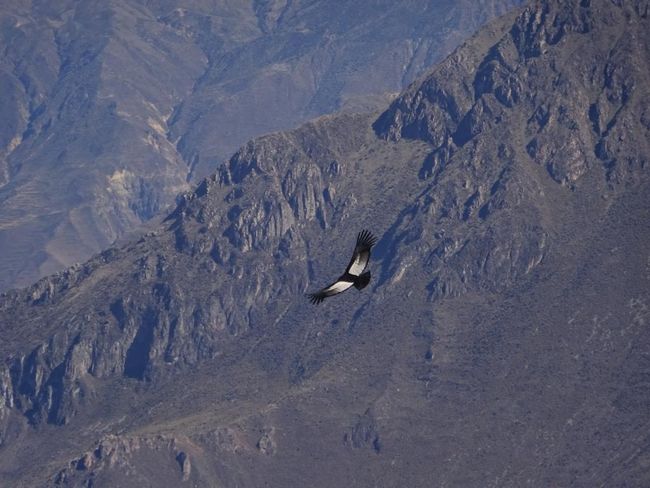
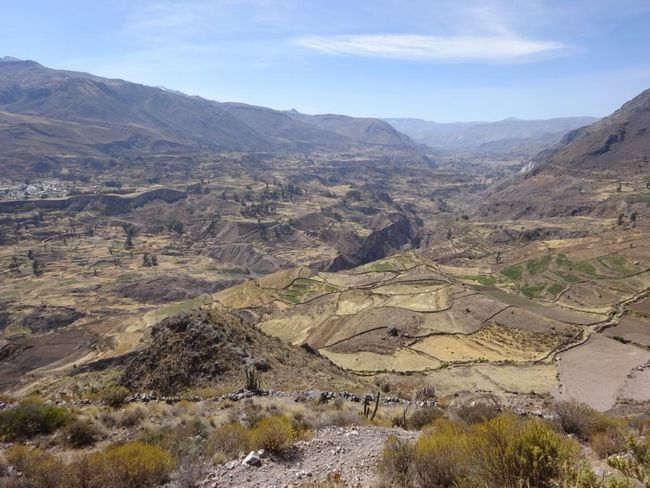
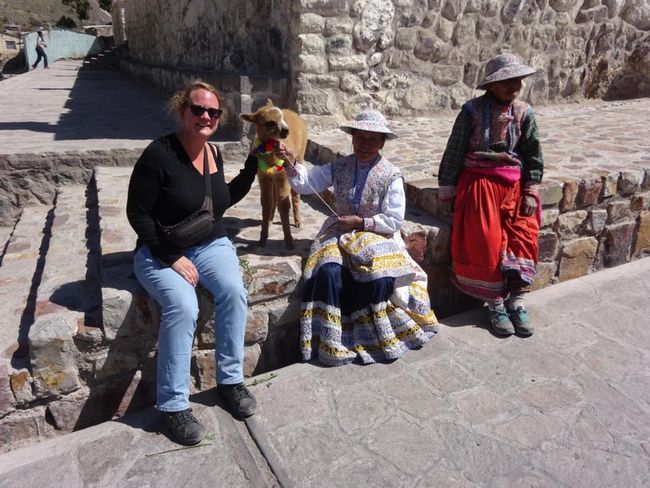
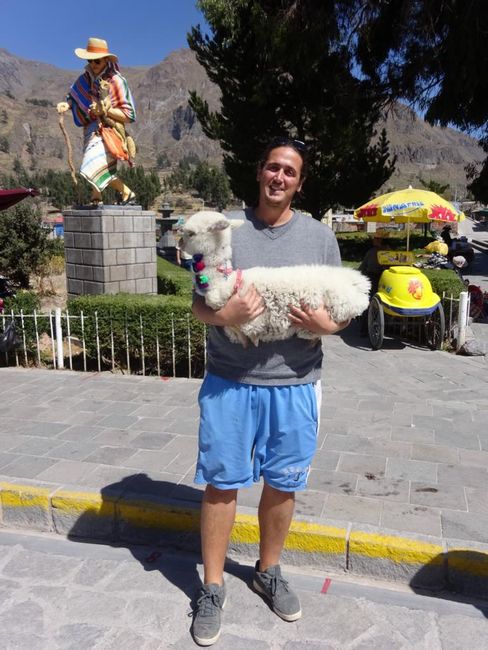
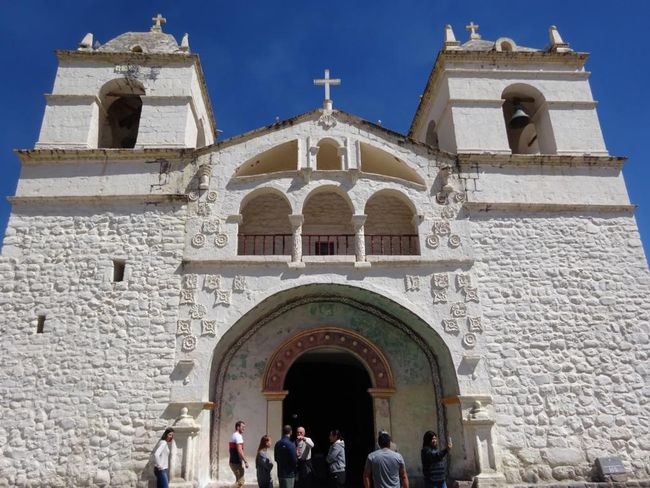
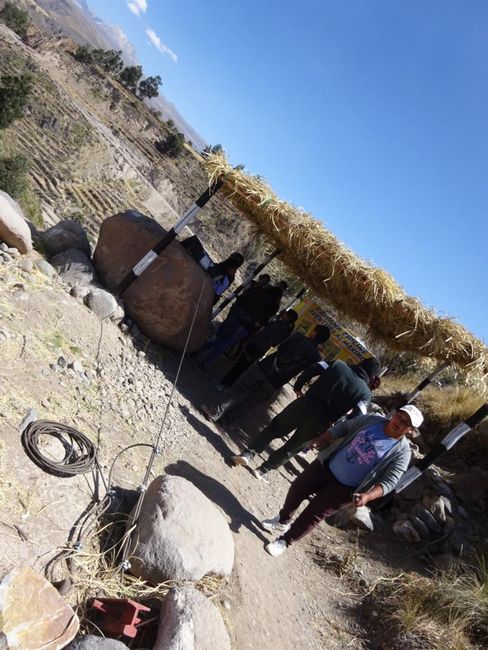
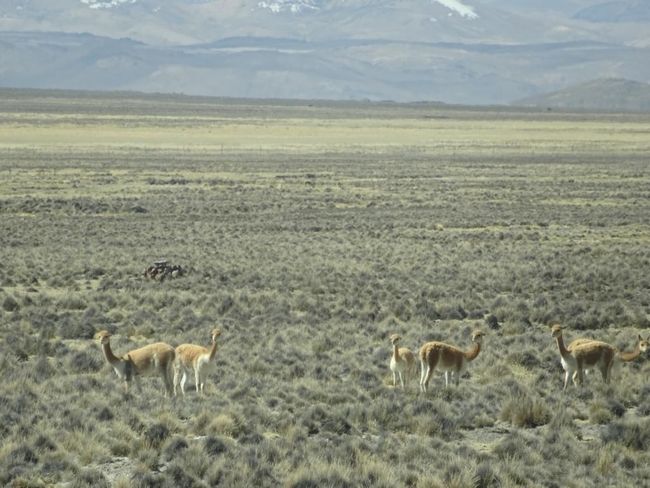
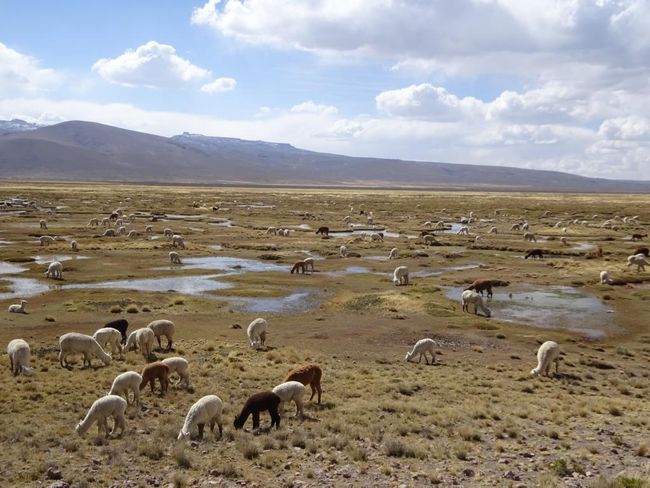
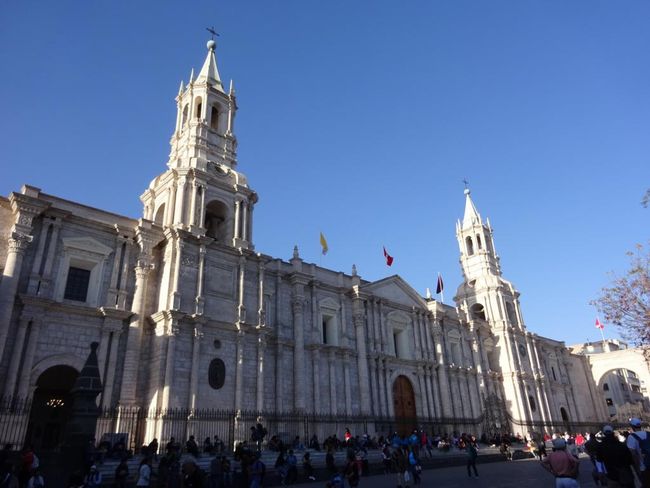
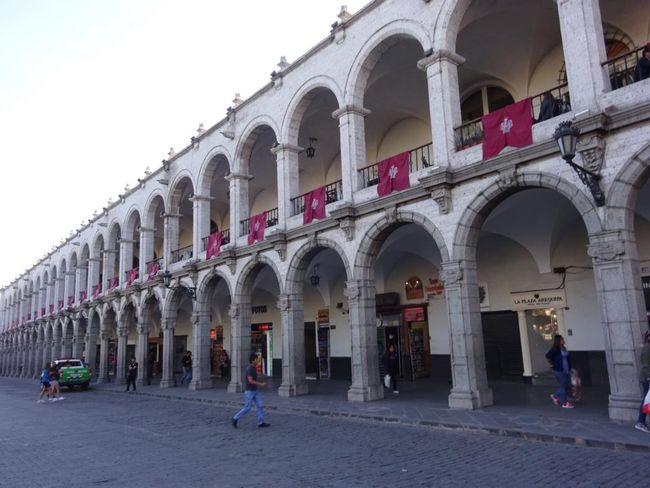
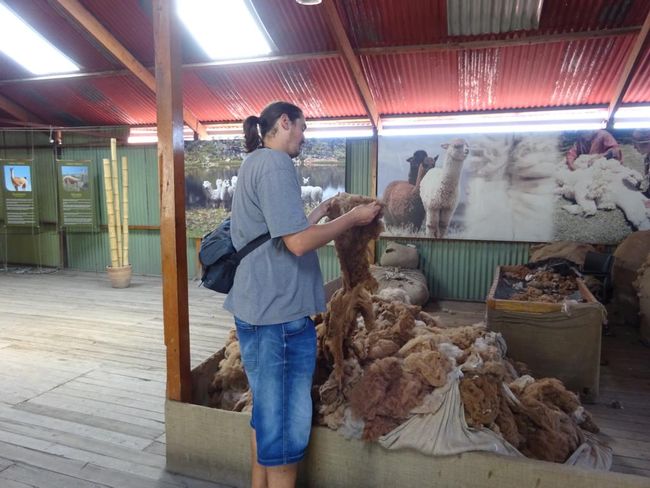
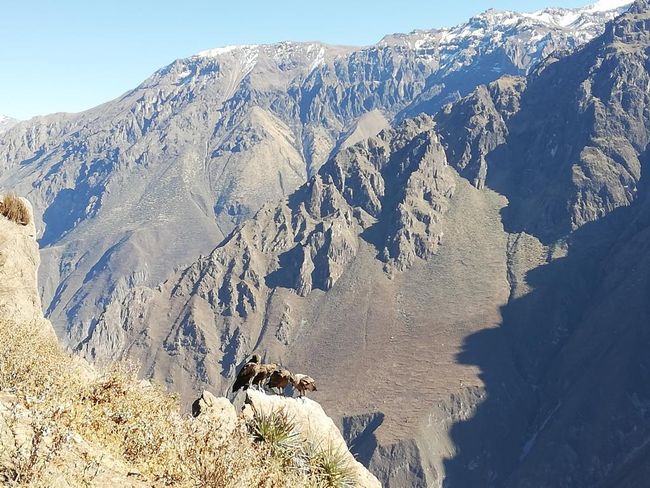
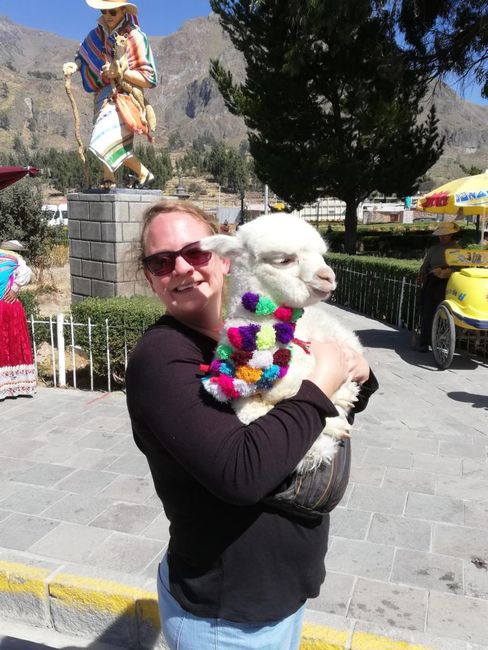
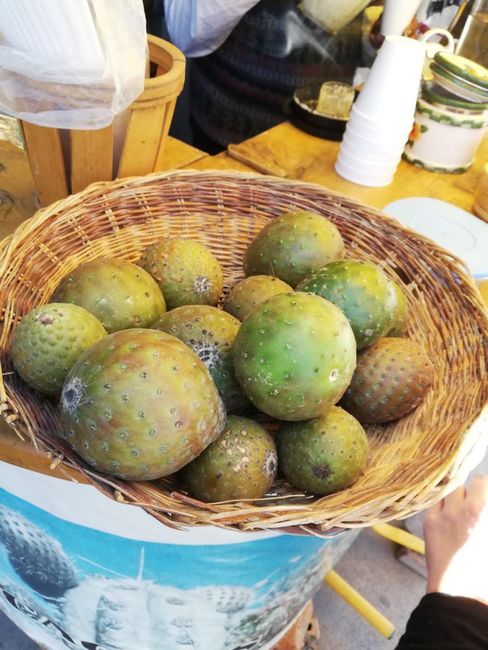
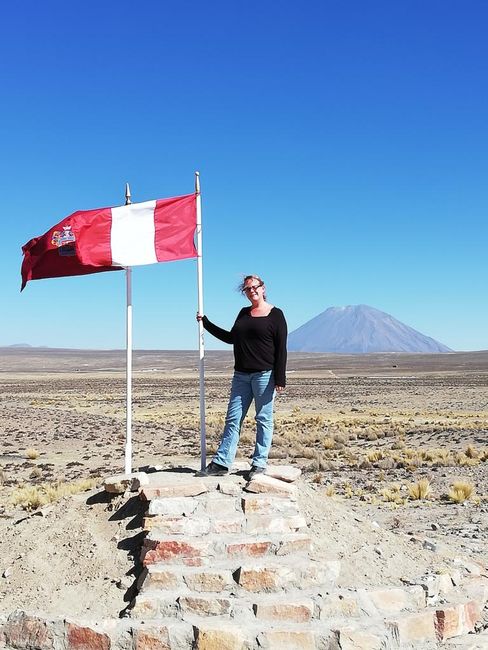
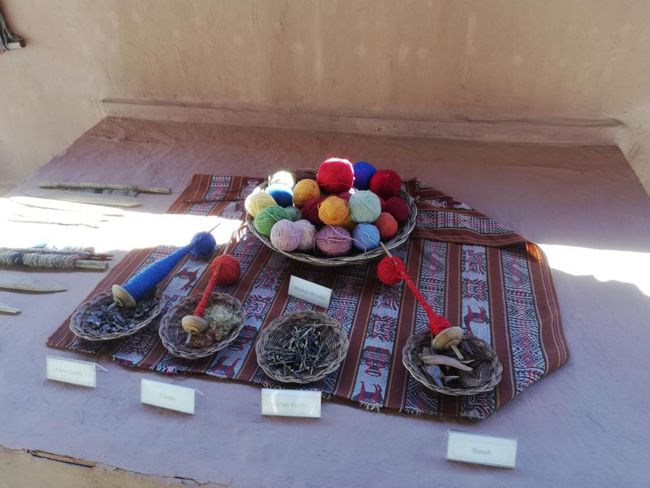
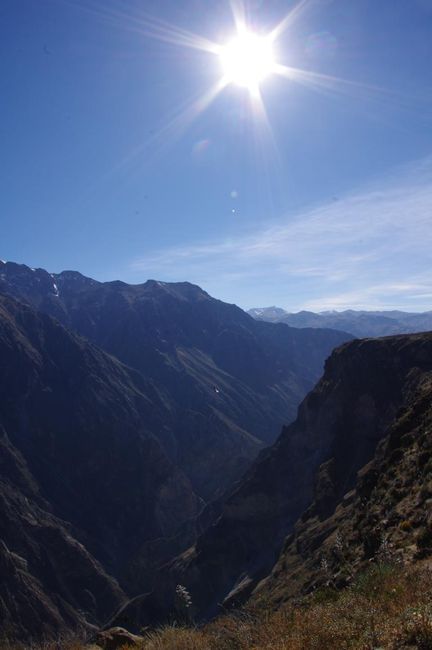
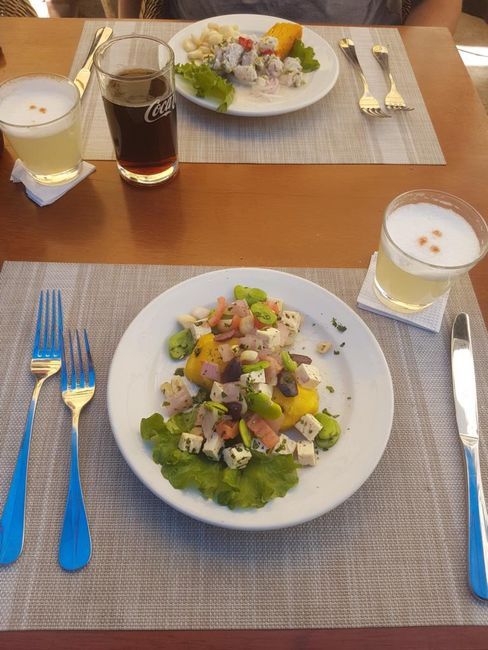
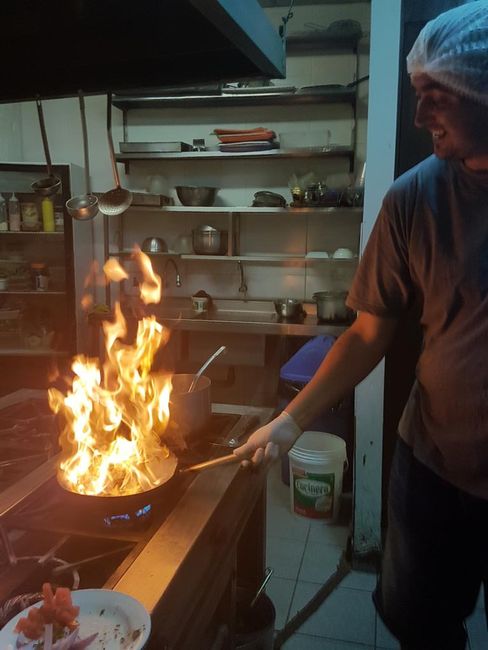
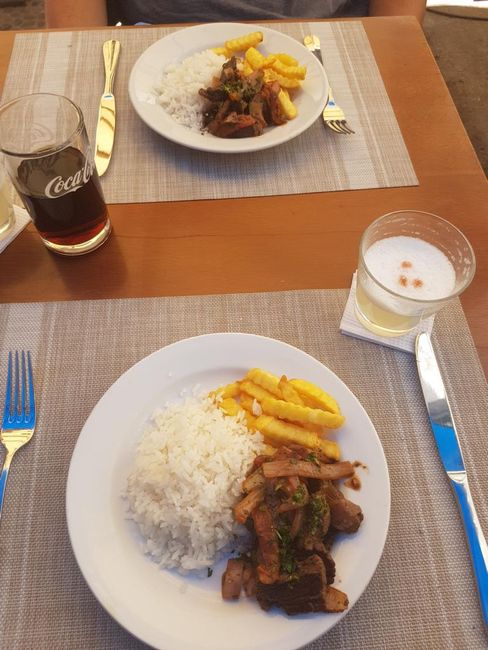
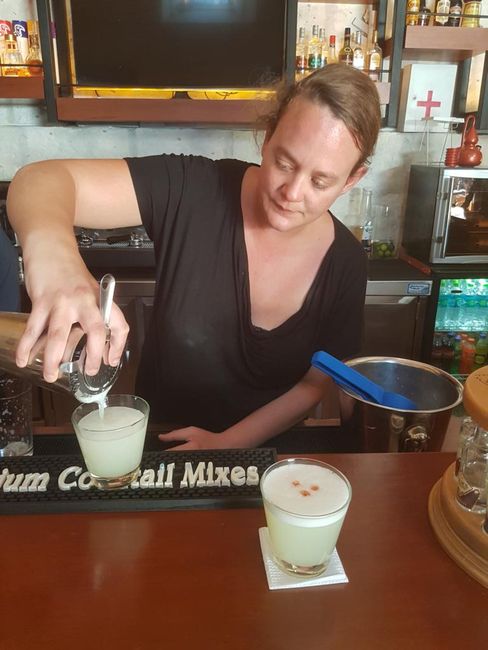
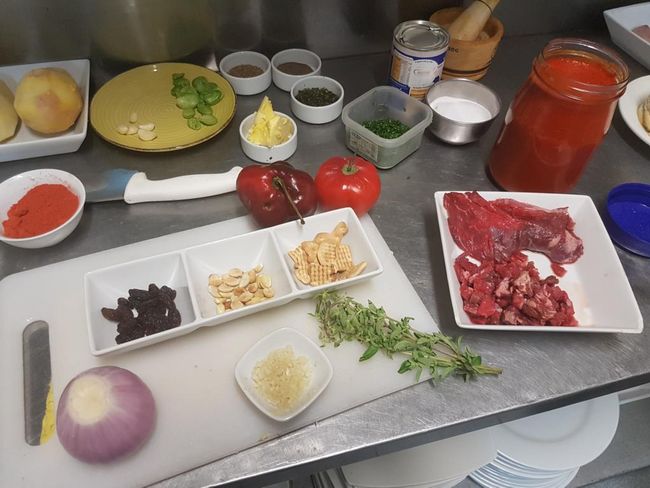
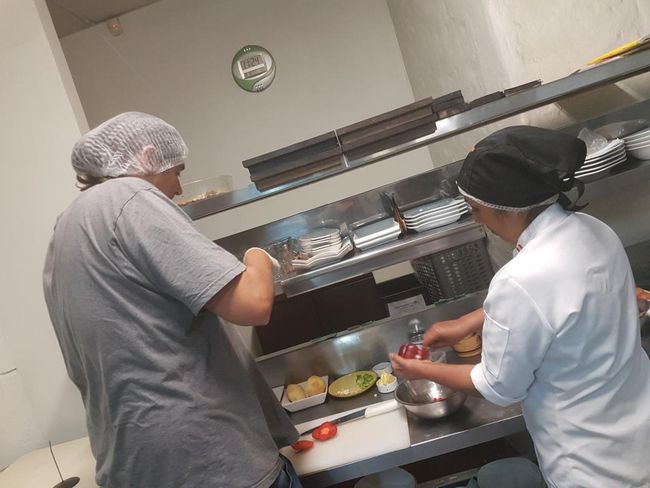
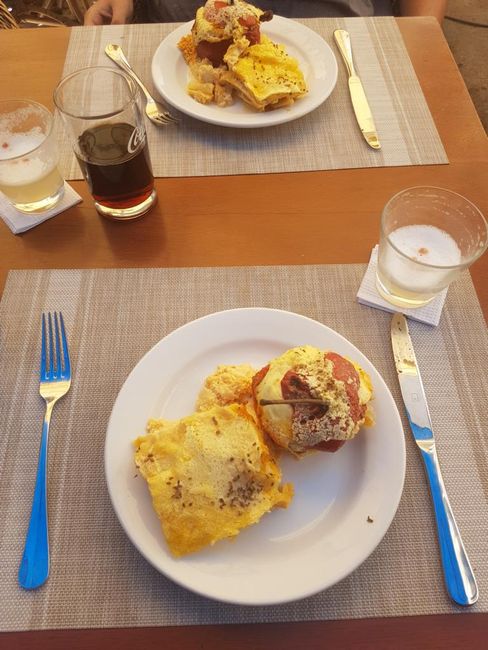
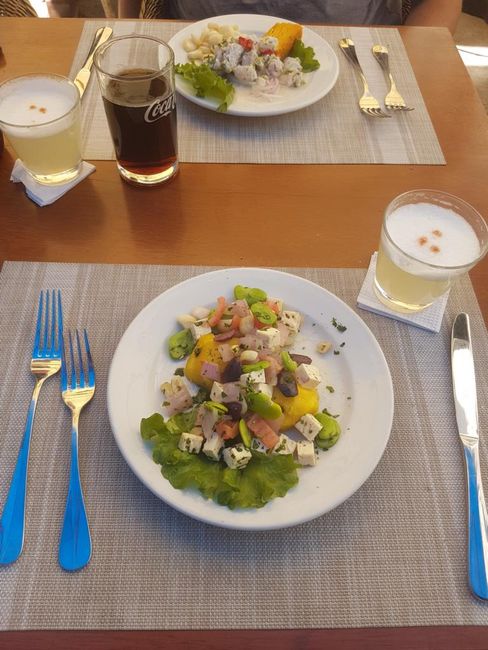
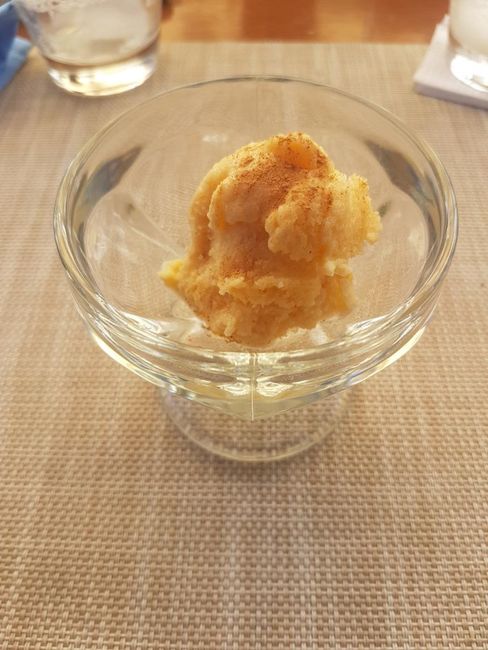
Ku biir Wargeysyada
Another endless bus ride later (in total we would spend about 100 hours on buses in Peru), we arrived in the second largest city in Peru: Arequipa. Arequipa is not only a beautiful colonial city, but is also surrounded by three impressive, gigantic volcanoes.
For the first day, we booked a
trip to the Colca Canyon, which is considered the second deepest canyon
in the world. However, since the gorge is very wide and the walls
are not very steep, in my opinion, these dimensions are not so
greatly emphasized. This time we opted for the lazy tour, namely a one-day
sightseeing tour to the main attractions, where you are driven
around by car everywhere and don't have to hike much. That was a more or less good
idea, considering the fact that we would sit in a cramped minibus for about 13 hours. The biggest
challenge of the day, however, was that we were already picked up
at the hotel at 3 am. On the way to the canyon, we already crossed
the first pass at 5,000 meters above sea level, so it was very cold.
Our first stop was in a cold hut in the town of Chivay, where there was a small breakfast. Again, on this tour
we were with a group of local tourists (the Gringos
all book the 2-day hiking tour) and once again everything was
very cool and unfortunately without much conversation
among ourselves. Not that we didn't try, but the Peruvian families and groups
prefer to stay among themselves as usual.
Then we drove to a viewpoint, from where you
could admire the canyon and the terraces built by the locals. We were told that these terraces are cultivated in a communal manner for agriculture. All members
deforestation. The yields are divided among the families according to their size (i.e. the number of
family members). However, this system is increasingly shaking, as young people are becoming less and less interested in
working in agriculture, while the elderly are less and less able to
work on the terraces without the help of the
youth. Eventually, this system of terrace cultivation will probably die out completely.
Next,
we went to Cruz del Condor, another viewpoint where
you have the opportunity to watch the flight of the Andean condors
that live here. Although we only had about an hour before
we were hurriedly driven away in typical Peruvian fashion, we were lucky and could see quite a large number
of condors flying through the canyon.
On the way back,
we made another stop at another viewpoint (we had exactly 7 minutes, as the guide announced with great fervour), where we
were able to try an ice cream made from a local cactus.
Then we continued to the village of Yanque, where we had 20 minutes to visit the
small church, stroll through the souvenir market (which
is of course everywhere), take some photos with baby alpacas (of course for a tip, but the little animals
were really too cute not to do it), and try a Colca Sour. This is a modified version of the
Pisco Sour with the same cactus fruit that we had tasted as an ice cream before. It tasted really delicious, unfortunately this
cactus does not exist at home, otherwise we would have immediately added this
drink to our cocktail menu!
The next "highlight"
was the lunch buffet. The alpaca saltado
(Alpaca stir-fry with tomatoes and onions in broth) was quite tasty, but otherwise the selection was not exactly
overwhelming. And heaven forbid if you dared to take 2 desserts, then the restaurant staff would immediately scold you (so much
for the all-you-can-eat concept).
Originally, a short visit to the local thermal bath was also on the program, but surprisingly nobody in the group wanted to go there. We
ourselves hadn't even packed our swimming gear. Instead, some participants wanted to do the zipline through the canyon.
It's fine for them, but the whole installation looked so
untrustworthy that I would never have attached myself to it.
The last stop was on a wide plain in a
protected area, where we could observe a huge herd of wild llamas,
alpacas, and even vicuñas grazing. Vicuñas
are cute relatives of alpacas and live in the Andean highlands.
Since they were on the verge of extinction because of their wool, which is considered the finest fiber of all, they are heavily protected, and their populations have recovered. Killing the animals is subject to severe
punishment. Once a year, the wild animals are driven together, and each animal can only be sheared for 200g of wool, which makes it very valuable. The price for a scarf
made of vicuña wool is about $2,000, so it is an absolute luxury item (but it is really incredibly soft).
Although we had saved a lot of time by not going to
the thermal baths, the guides stressed us again as soon as we got off the bus. They apparently sensed the chance to finish work earlier. And Jörg and I were getting tired of always being the only ones complaining, because the Peruvians
didn't say anything, they just accepted everything without a word. No matter how bad the service was, no one would ever complain. In the end, we were also not sad to finally get out of
this bus, so we soon drove back to Arequipa.
One of the absolute highlights of our
time in Arequipa was the cooking class we had booked. Peruvian cuisine apparently is one of the best in the world.
Undoubtedly, it is one of the best in all of Latin America. In any case, we had never eaten so
varied and delicious before. Delicacies like Palta Rellena (avocado filled with a kind of Russian
salad) and Papa Huancaina (potatoes with a
garlic sauce) were definitely a welcome change from the usual, dry white rice.
The cooking class took place in a pretty upscale
restaurant, where they were waiting for us in the kitchen. We were the only people in the class. Such classes are always delightful, apart from the culinary
horizon expansion, you don't have to clean up and wash the dishes afterwards.
In
the class, we learned how to prepare the following dishes (and diligently took notes for back home):
Lomo Saltado (same as Alpaca Saltado, but with beef)
Rocoto Relleno with potato gratin (similar to stuffed peppers, only that rocotos are much spicier)
Soltero de Queso (a salad made from beans and cheese)
Ceviche (a fish dish, only for Jörg)
In addition, at the bar I received an
guidance on how to prepare a proper Pisco Sour.
Afterwards, we were able to enjoy our self-prepared feast on
the restaurant terrace. Mmmhhh, delicious.
In Arequipa, we also visited a Mirador, from where you had a more or less good view of the surrounding volcanoes, and also the huge, beautiful Cathedral with its impressive organ. Or rather, I visited it, because Jörg was once again denied entry due to his shorts. Considering the fact that he is the Catholic of the two of us, who pays a lot of taxes to the Catholic Church, this is a bit ridiculous.
Very interesting was the visit to the Museo Santuarios Andinos. In the museum, burial offerings are shown that were found in the mountains along with mummies that had met their end as human sacrifices. Human sacrifices were common for the Inca. In particular, they saw the mountains as deities and tried to appease angry gods (e.g. in the form of erupting volcanoes) with such sacrifices. For the victims and their families, this fate was seen as a great honor. The victims were usually young and beautiful girls, the best that could be offered to the gods. The highlight of the exhibition is the somewhat macabre visit to poor Juanita, a girl of about twelve years old who was sacrificed to the gods in the 1450s and is now presented in surprisingly good condition in a deep freeze showcase. Juanita "the Ice Maiden" was found in 1995 on the summit of Mount Nevado Ampato. The visit includes a film of about 20 minutes that provides information about the finds and also reenacts how Juanita must have hiked up the mountain with her entourage and the shamans. Just think about it, the dedication and humility that this girl must have felt. In open sandals and wrapped in a few cloths, she climbed to an altitude of 6,288 meters, knowing full well that after this ordeal, she would meet her violent death up there (her skull was smashed after she was first stunned with coca leaves and other means). In her place, I would have sat down on the ground at the latest halfway and said: if you want to kill me, then you better carry me up there or do it right here.
In addition, we also visited the Monasterio de Santa Catalina, a huge
monastery complex in the middle of the city. Practically, it is a city within a city. It was custom for every family to send a daughter to
tthe monastery and also pay a generous annual dowry. Depending on their wealth, the inhabitants
lived in simple or very luxurious apartments. The nuns were forbidden to have contact with the outside world, and as novices they had to take a vow of silence.
Today, only a few nuns live in the monastery, in a strictly sealed-off area, far
from all the crowds of visitors who come to the complex every day.
In addition, some paintings of the famous "Cusco School"
were also on display. I was looking forward to see these. However, personally, I couldn't really see much of the apparently typical mixing of sacred and indigenous art, it all looked pretty
Catholic .
The monastery is a really impressive colonial building and the visit was very interesting.
Finally, we visited the Mundo de Alpaca, where the production of the popular textiles from shearing the animals to the finished weaving is described. On the one hand, you can see the artisanal process, which is deeply rooted in Peruvian tradition. On the other hand, you can tagain, some "modern" machines that were used to process the textiles in an industrial process.
Ku biir Wargeysyada
Jawaab

Warbixinaha safarka Peru

